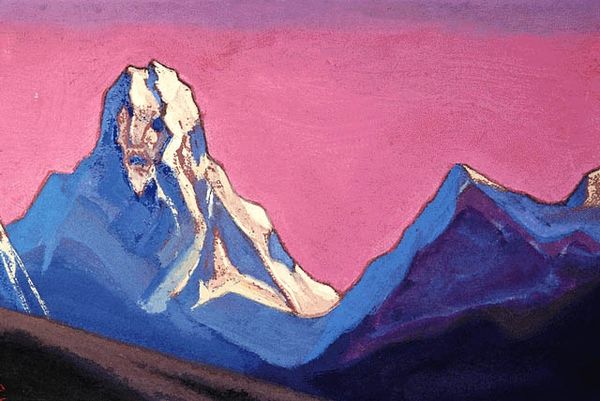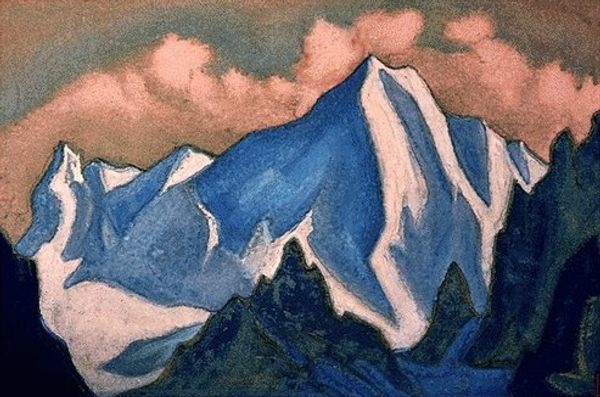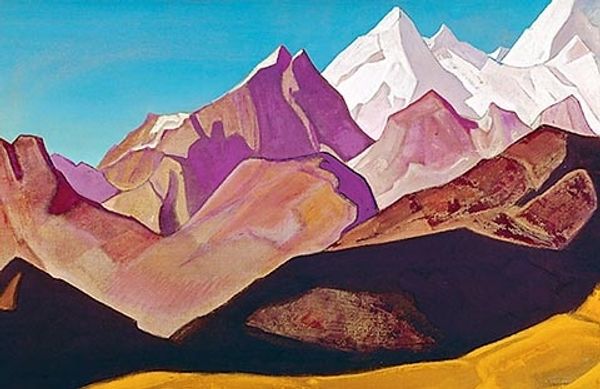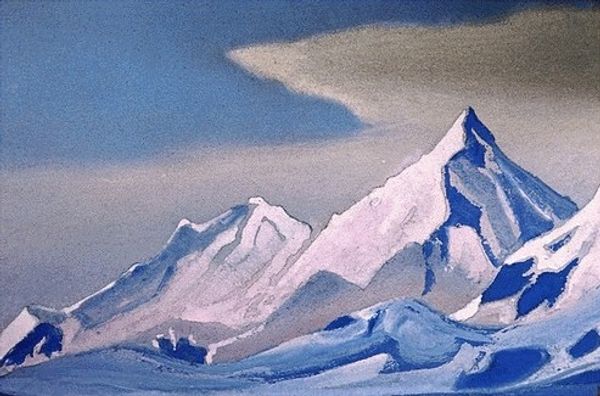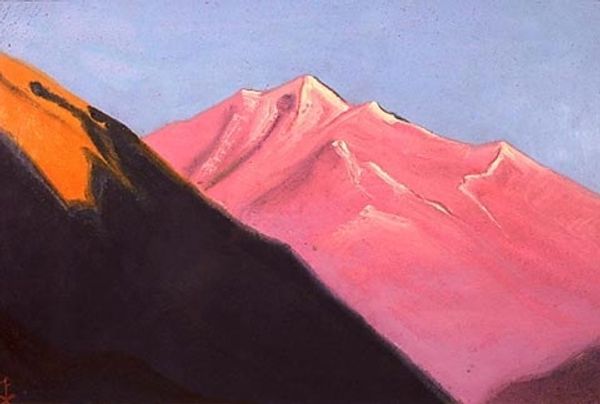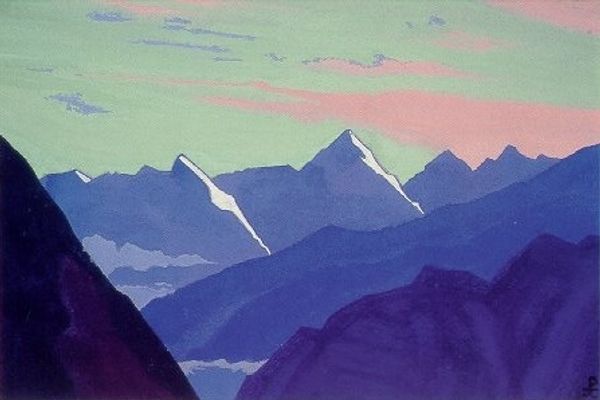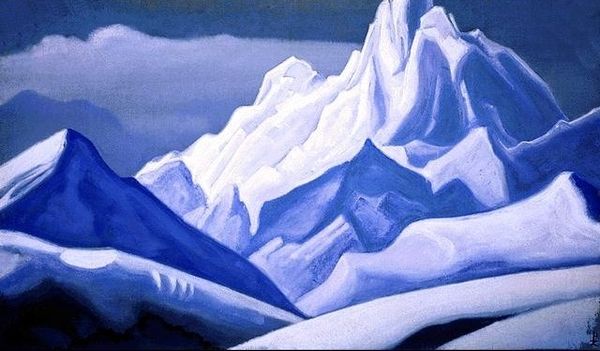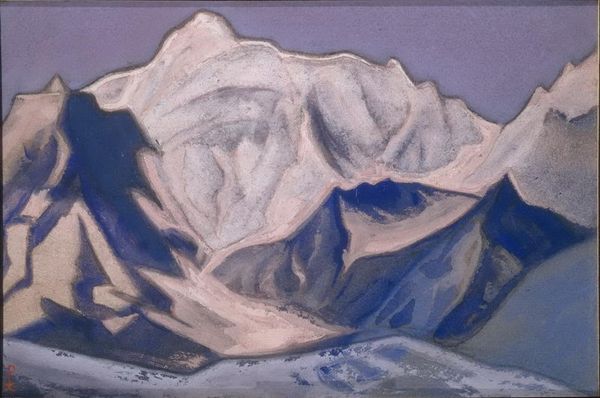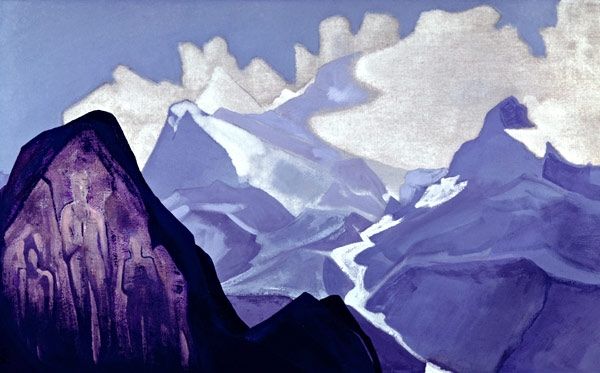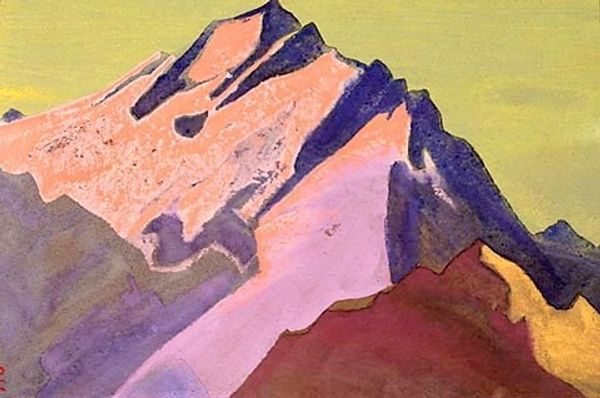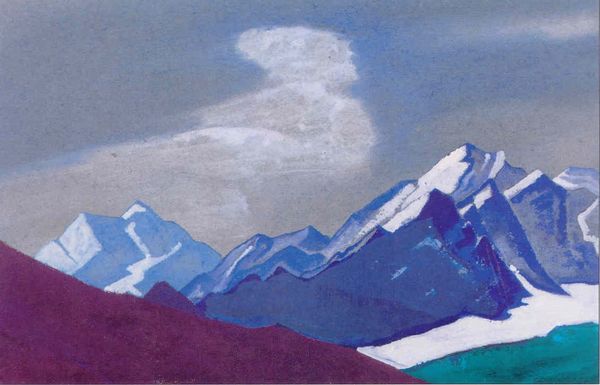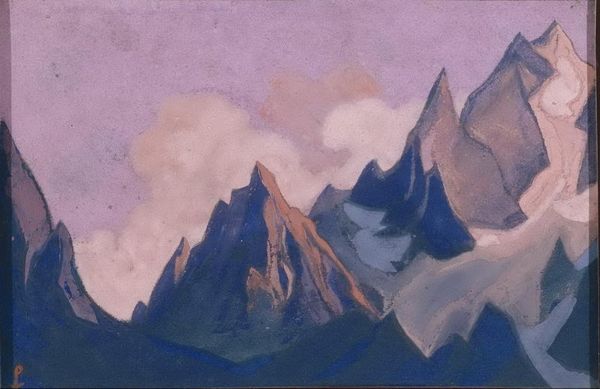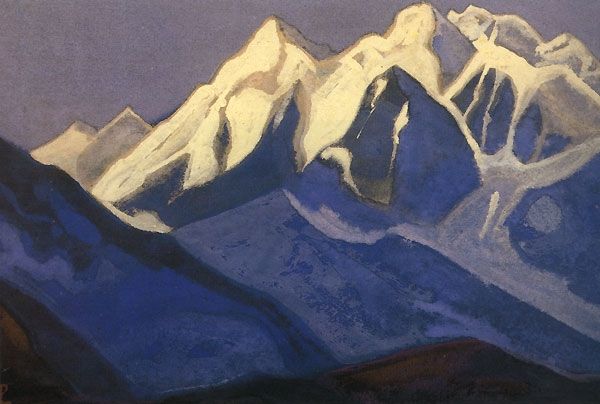
Copyright: Public domain
Editor: Here we have Nicholas Roerich's "Himalayas," painted in 1943 using oil paints. I'm immediately struck by the dramatic contrast between the cool, imposing mountains and the almost ethereal, pink sky. It feels both serene and powerful. How do you interpret this work? Curator: This piece speaks to the socio-political context of its creation, during a time of immense global upheaval. Roerich's idealised representation of the Himalayas can be viewed through the lens of cultural escapism, and perhaps even a form of spiritual resistance. Do you notice how the almost luminescent peaks, combined with the rosy sky, evoke a sense of transcendental beauty that stands in stark contrast to the horrors of the Second World War happening simultaneously? Editor: Yes, that tension is definitely there. It's like he's offering a vision of something timeless and untouched by human conflict. Curator: Exactly. Roerich was deeply interested in Eastern philosophies and saw the Himalayas as a symbol of spiritual transcendence. But also, consider who gets to experience that untouched space? Who has access? His romanticism potentially obscures issues of access, class, and even colonialism that have always shaped our relationship to landscapes. Who has historically benefitted from this idea of untouched landscapes, and whose perspectives have been excluded? Editor: That's a crucial point I hadn't considered. The idealization can mask some really important power dynamics. It gives me a lot to think about regarding representation and privilege. Curator: Precisely! By considering such pieces within the framework of historical power dynamics, we deepen our understanding of art as more than just aesthetics. Editor: Thanks for helping me consider "Himalayas" through that lens! Curator: My pleasure! Remember, art history isn't just about pretty pictures, but about critically examining our shared cultural narratives.
Comments
No comments
Be the first to comment and join the conversation on the ultimate creative platform.
